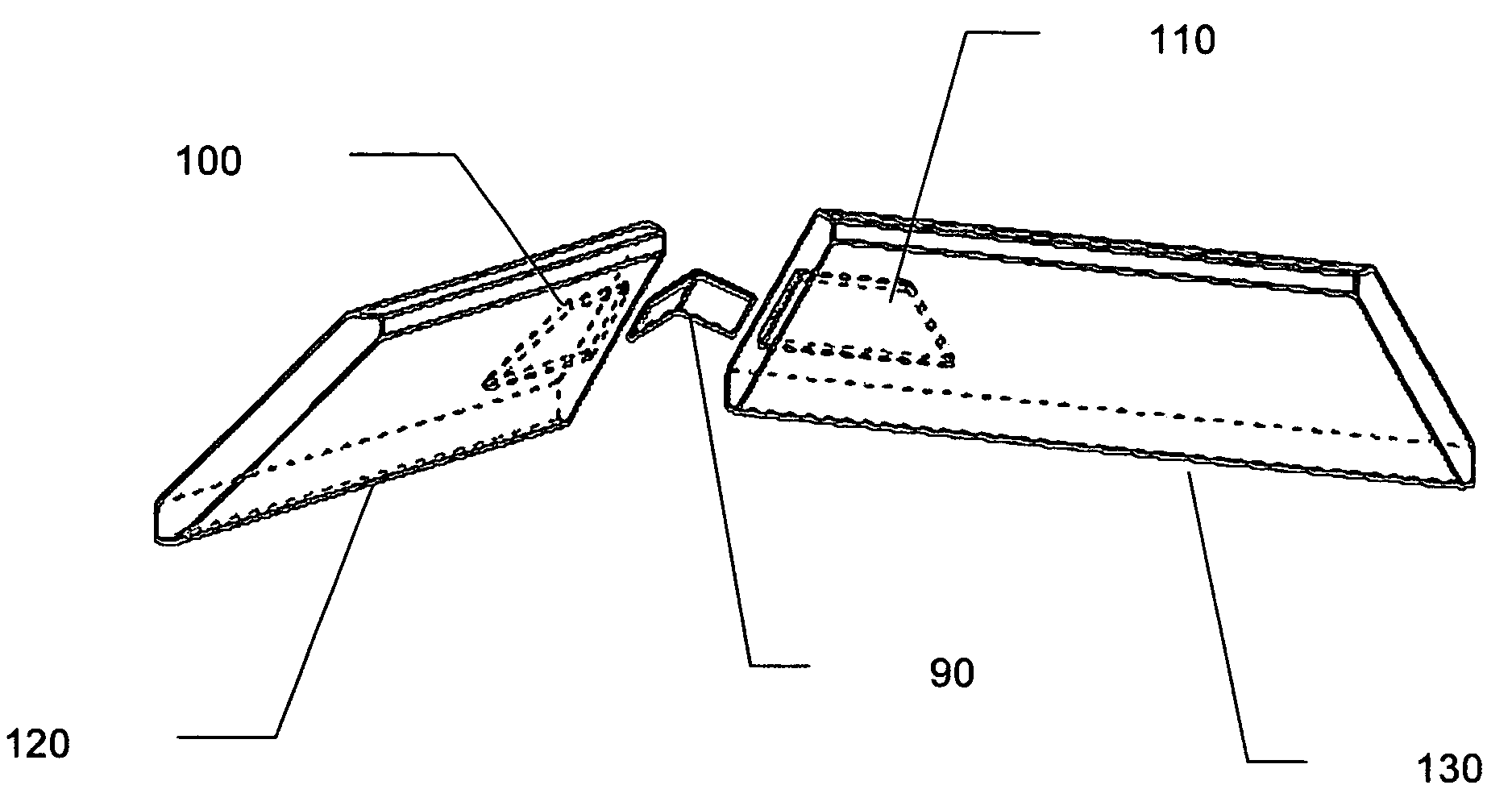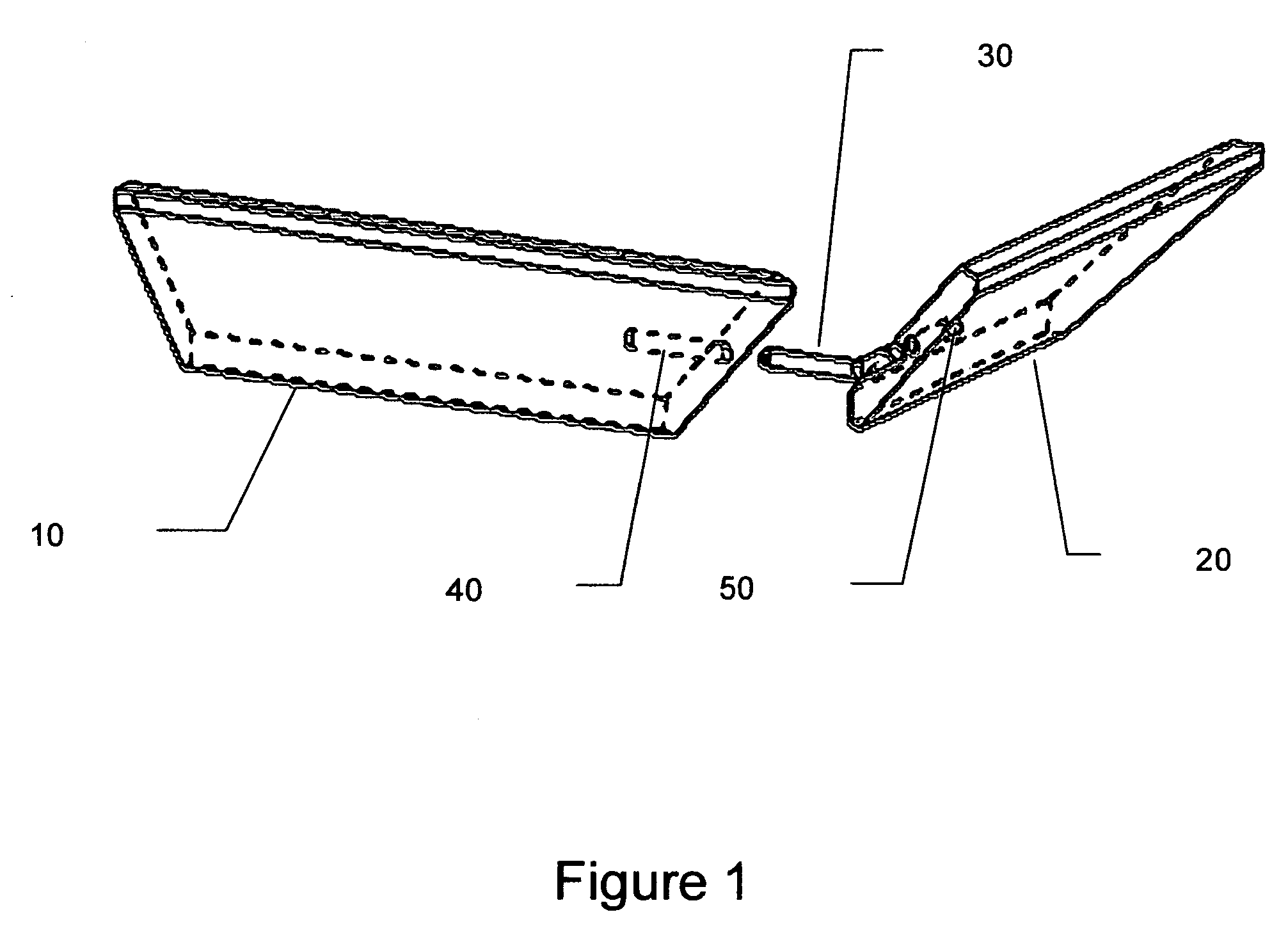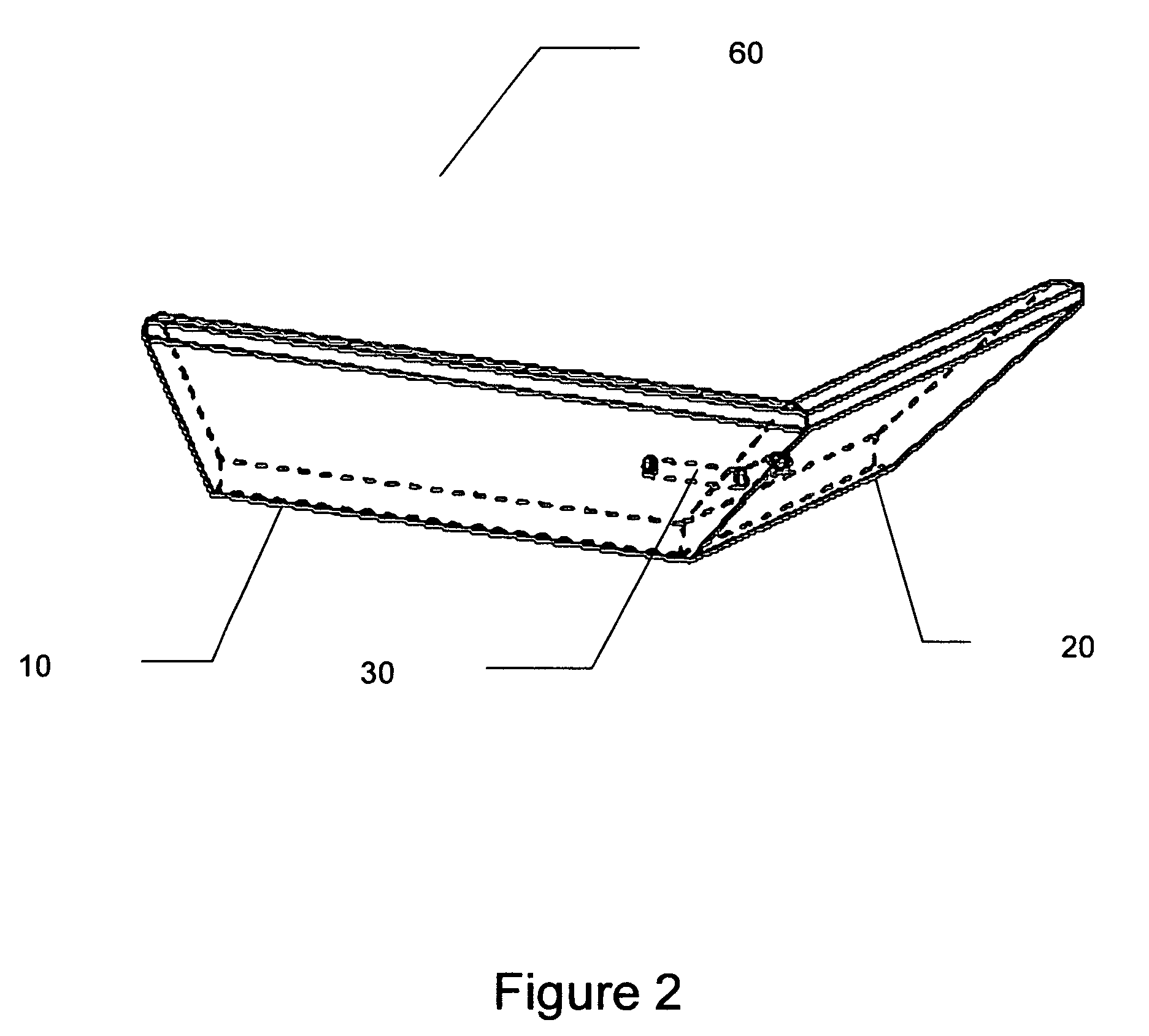Apparatus and method for facilitating accurate placement and installation of molding
a technology of accurate placement and installation, applied in the direction of building components, structural elements, building scaffolds, etc., can solve the problems of difficult installation of corner pieces, difficult cooperation of two or more workers, and notoriously difficult installation of molding at the corner intersection of two adjacent walls, so as to increase the accuracy of molding installation
- Summary
- Abstract
- Description
- Claims
- Application Information
AI Technical Summary
Benefits of technology
Problems solved by technology
Method used
Image
Examples
Embodiment Construction
[0023]Referring to FIG. 1, an exploded view of two pieces of molding 10, 20 that will form an outside corner is shown with an embodiment of an aligning member 30 in between. Each piece of molding 10, 20 has a receiving hole 40, 50 drilled into its end to allow insertion of an arm of the aligning member 30. As shown in FIG. 2, once assembled, the two pieces of molding will be held together by aligning member 30 allowing an installer to hold the assembled corner 60 with one hand and secure the assembled corner 60 to the wall, ceiling or floor with the other hand.
[0024]As depicted in FIGS. 1 and 2, an embodiment of the aligning member 30 resembles a “two-headed dowel” having arms with a circular cross-section and an angle formed between the two arms. The length of the arms must be sufficiently long and the arms must be sufficiently strong to hold the weight to a piece of the molding since only one piece of the molding may be otherwise supported during installation. FIGS. 3 and 4 show t...
PUM
 Login to View More
Login to View More Abstract
Description
Claims
Application Information
 Login to View More
Login to View More - R&D
- Intellectual Property
- Life Sciences
- Materials
- Tech Scout
- Unparalleled Data Quality
- Higher Quality Content
- 60% Fewer Hallucinations
Browse by: Latest US Patents, China's latest patents, Technical Efficacy Thesaurus, Application Domain, Technology Topic, Popular Technical Reports.
© 2025 PatSnap. All rights reserved.Legal|Privacy policy|Modern Slavery Act Transparency Statement|Sitemap|About US| Contact US: help@patsnap.com



